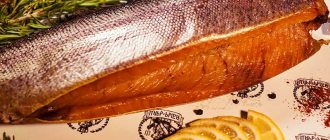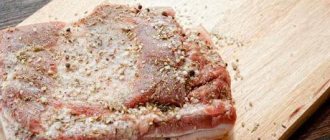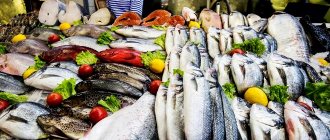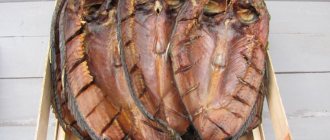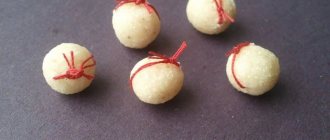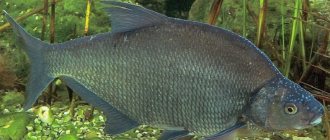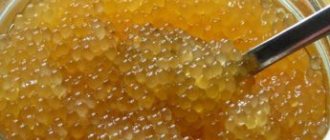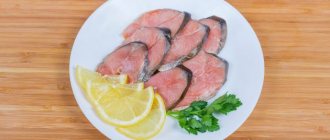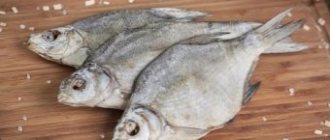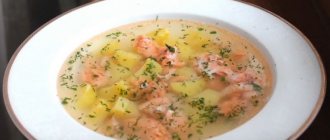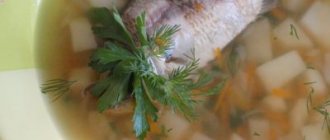Balyk from ide: preparing fish
Ide is a close relative of carp, just as fleshy and large, but unlike carp, its scales are smaller. And it’s better to remove it before poking. We skin our fish, cut off the head, gut it and thoroughly wash the inside to remove films and clots - they can give an unsightly color when dried. After this, it is better to simply cut ides weighing about 2 kilograms along the belly line and unfold them like a book, but larger specimens are better cut into large pieces so that they are better salted and dry faster. Then the ide balyk will cook evenly without taking too long, and will not dry out or spoil.
Salting and drying
Not a single recipe for ide balyk can do without pre-salting. Since we will not process the fish thermally, salt will not only act as a flavoring agent, but will also disinfect the fish from parasites and preserve it from rotting. Let's take several carcasses of 2 kilograms each:
- coarse salt - 400 grams,
- granulated sugar - 100 grams,
- freshly ground black pepper - 1 teaspoon.
Mix the spices, pour a little of the resulting mixture onto the bottom of the pan in which our ide will be salted. Place the fish carcasses unwrapped and generously sprinkle them with salt. We put a little pressure on top so that the brine juice comes out of the fish faster. We leave the ide to salt for a couple of days so that the salt saturates the meat well. During this time, you can take a break from cooking, read the latest news or look at photos in the photo albums of the “All about Fishing!” website.
After salting, ide balyk at home requires soaking in water. The excess salt that has been absorbed into the fish will come out, leaving only the amount that is necessary and pleasant to the tongue. To do this, soak the carcasses in cool, clean water for 4-5 hours. Periodically drain the water and replace it with fresh water, and turn the ides over. Soaked fish requires light drying with towels or cloth. We wrap it briefly, and then string it on hooks or tie it by the tails with twine.
How to salt ide correctly
You can pickle ide at home in different ways - dry, quick or in brine. In any case, you should adhere to some requirements:
- The carcass must be fresh or chilled.
- Before salting it must be gutted.
- The salt used is not iodized.
- The container is clean and dry.
- It is better to take enamel or glass containers.
Dry method of salting ide
For 5 kg of fish you will need to prepare:
- sugar – 50 g;
- peppercorns – 10 g;
- coarse salt.
Fine salt can burn and oversalt the fish, but it does not dehydrate, which is necessary for the dense consistency of the finished product.
You should salt the ide as follows:
- Gutted fish is coated with a mixture of salt and sugar inside and out and placed in a container, sprinkled with pepper.
- The last layer is salt and sugar.
- Place a lid and pressure on top (a jar of water will do).
- Then the container is placed in a cool place for 3-4 days.
We recommend reading: How to fry carp in a frying pan
A quick way to pickle ide
For this method, for every 700 g you will need 1 tbsp. l. sugar and 2 tbsp. l. salt. Gutted fish are first freed from the head, tail and fins. Cut lengthwise into two parts and then into pieces 5 cm in diameter. Then they are placed in a container, layered with a mixture of salt and sugar. After 2-3 days, the salted product is ready.
Another quick way, the so-called salmon one, is as follows:
- First, they fillet it, removing large bones if possible.
- Then the pulp is slightly dried with a towel.
- Place fillet pieces into a container or jar, sprinkling them with a sugar-salt mixture (1:2) in an even thin layer.
After 1-2 days, the fish can be served with boiled hot potatoes.
In addition, ide can also be salted in brine, which is prepared from 2 liters of water, 500 g of salt, black pepper and bay leaf (for 3 kg of fish). All spices should be boiled in water, the brine should be cooled and small pieces of fish or fillet should be poured over them.
The fish will be ready in a week.
In addition, you can pickle ide caviar. To do this, you will need a strong brine - a strong brine in which an egg or potato will not sink.
For 100 g of caviar, take about 120 g of salt. The volume of brine should exceed the volume of caviar by 3 times.
The brine should first be boiled for 10 minutes, cooled to 40 degrees and caviar placed in it. For 15 minutes, carefully stir the mass so that it is well saturated with salt and place on a sieve to remove liquid. A little vegetable oil is added to the salted caviar.
Tsar's balyk, secrets of aging
To make the ide balyk truly royal, we will need patience and... fan. The first one is more or less clear: balyk is obtained by the method of long withering and weathering of the fish. But you will need a fan if you are preparing ide balyk at home and want to speed up the drying process without hanging the fish out of the window under the air flow. The main thing here is not to dry it out. As soon as a dense, elastic, amber-colored crust appears on pieces of fish or carcasses, it is better to stop drying in the open air. This usually takes from 2 to 4 days. After this, take a natural fabric (this could be an old cotton sheet or linen towel). Cut it into large squares. We wrap a carcass or a piece of ide in each piece of linen. We make sure that the entire surface of the fish is wrapped in cloth. We place the bundles in the refrigerator in the compartment for vegetables: the balyk does not need too low a temperature. Here our ide will ripen, gain taste and aroma. This process is long, takes from a week to a month, but the result will taste simply luxurious, and we will have a real royal ide balyk.

Ide is a very tasty fish, and a true fan of fish cuisine will not be able to get by with just one recipe for ide balyk. We also recommend trying to make cutlets from this fish, bake it in the oven or smoke it.
Follow us on social networks
— through them we publish a lot of interesting information, photos and videos.
Popular sections of the site:
The fisherman's calendar will allow you to understand how all the fish bite depending on the time of year and month.
The fishing gear page will tell you about many popular gear and devices for fishing.
Fishing baits - we describe in detail live, plant, artificial and unusual ones.
In the bait article you will get acquainted with the main types, as well as tactics for using them.
Learn all the fishing lures to become a real fisherman and learn how to choose the right one.
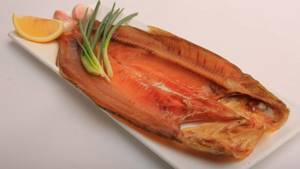
Asp is one of the most common freshwater fish of the carp family. There are many known ways to prepare this fish, but now a balyk recipe for preparing asp will be offered. So, let's look at what you need to prepare balyk from asp.
Drying with a block
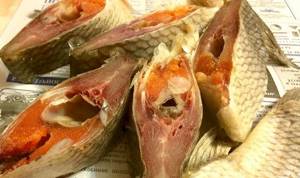
The process is a type of cold drying, it gives the fish elastic properties. To get dried ide, you must first salt it.
The fish taken is medium-sized - 20 cm long in a batch of 18-20 pieces. For salting you will need the following:
- a box with holes in the walls;
- polyethylene;
- oppression;
- salt – 3 kg;
- laurel – 7 pcs.
First, the carcasses are gutted, washed, rubbed with salt from the inside and placed in a box on a 1-2 cm layer of salt. Each soy of fish is sprinkled with salt and bay leaf. The top is covered with polyethylene and oppression is installed. The entire structure is placed on a tray for the released liquid and taken out to a cool place.
After 5 days, the ides are taken out and placed in cold water, using a large container, such as a bathtub, for 2–3 hours so that the fish gives up excess salt. After the specified time, the ides are laid out on newspapers to dry.
We recommend reading: Cold smoked pink salmon at home
Then the fish are hung by their tails on copper or aluminum hooks and sent to dry in the fresh air, after being coated with vegetable oil. This way flies won't land on them.
You can dry fish in the basement using a fan or convector.
After 2 weeks, the ide will dry and be ready to eat.
Asp balyk recipe at home
Ingredients. The recipe requires very little:
- Coarse salt at the rate of 250 - 300 grams per 1 kg of fish meat.
- Spices to taste (if desired):
- 1 pinch of dry dill;
- ¼ teaspoon ground black pepper;
- 2 medium cloves of finely chopped garlic.
It is very important to control the progress of the process throughout in order to prevent flies, midges and other insects from getting on the fish: the entire prepared asp may spoil.
Preparation. The recipe goes on to describe the step-by-step procedure:
- Prepare about 1 kg of coarse table salt. One or two pieces of cotton fabric of the required size. Heavy object as oppression. Washing the fish.
- Using a sharpened steel knife, cut the fish carcass from the back from head to tail. We cut along with the rib bones, cutting right down to the abdomen so as not to lose fat. This results in a so-called “layer”. (Be careful not to damage the gallbladder, otherwise the meat will taste bitter).
- We clean the entrails and remove the gills. Wash off all residues and blood.
- Use a separate cloth to soak up the moisture from the entire surface.
- We fill the entire “layer” with a thickness of approximately 1 mm with salt and spices. Place under pressure for at least 12 – 14 hours (salting time depends on the size, thickness and weight of the fish).
- At the end of the salting process, the carcass must be soaked in water. (If the fish weighs 2 kg, the soaking time will be about 3 hours. Fish weighing about 3 kg should be soaked for less time - already an hour and a half. It is advisable to do everything under running water. If this is not possible, the volume of liquid should be no less than 5 liters. Water must be changed 4 - 5 times.
- We wrap the almost finished balyk with a prepared piece of cotton cloth soaked in a 9% vinegar solution. The recipe for asp balyk recommends hanging the fish preserved in this way out into the air in the shade, or in a draft indoors for 3 or 4 hours. The edges of the material must be connected without tears or cracks!
- Then put it in the refrigerator for a day.
- The final touch is to place the fish in the sun for 1 hour until it is covered with droplets of fat.
How to properly dry asp, recipe for “wet salting”
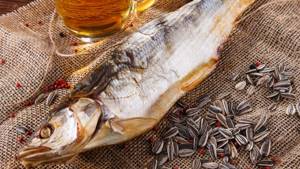
Dried asp tastes no worse. The recipe for its preparation is not much different in composition from balyk.
Ingredients. Here is the "wet" method:
- Coarse table salt at the rate of 0.8 kg per 2.5 liters of water.
- 10 kg of fish (it is advisable to select carcasses of the same size and weight).
- 2 – 2.5 m of gauze or other light fabric.
- Spices:
- 3 bay leaves;
- 6 – 8 black peppercorns;
- ¼ spoon of dry dill;
- ¼ teaspoon fennel seeds;
- 1 - 2 medium cloves of garlic.
Preparation. The salting procedure is simple, but relatively long-term:
The drying place should be shady, dry and well ventilated. After a couple of weeks, you can begin to remove the first specimens, which are smaller, and monitor the degree of readiness of the rest of the fish.
Pickled asp – finger-licking recipe
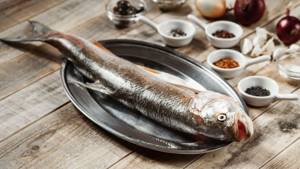
Pickled asp also tastes good. Let's take a recipe with vinegar for variety.
Ingredients. What products will we need?
- Fish – 2 pieces, approximately 2 kg each.
- Vinegar 9% - 250 grams.
- Water – 100 grams.
- Ground black pepper – 50 grams.
- Seasoning “Mixed peppers” with peas – ¼ teaspoon.
- Red pepper, hot – ½ teaspoon.
- Dried dill – 1 teaspoon.
- Dried parsley – 1 teaspoon.
- Soy sauce – 1 teaspoon.
- Sunflower oil (preferably refined) – 1 tablespoon.
- Onion variety “Greatful Red F 1” – 1 medium head.
- Onion variety “Strigunovsky local” - 1 medium head.
- A pinch of finely ground salt.
Let's cook. The cooking process is simple:
- Set aside 1 level teaspoon of black pepper.
- Mix vinegar and water in a glass jar of sufficient capacity.
- Add parsley, dill, soy sauce, red pepper, remaining ground black pepper, mixed pepper seasoning, and salt. Mix everything well and move it aside to let it brew.
- We take the fish, wash it, clean it of scales and entrails. Separate the head and fins.
- Cut into slices approximately 1 cm thick across the fish carcass. We rinse again to remove any remaining scales and blood.
- Take a cup of such a diameter that the resulting slices lie in two rows. Gently shake the contents of the jar and pour about a third of it into a cup.
- Place the pieces in a circle in two rows.
- Shake again and pour the rest onto the fish rows.
- Sprinkle with reserved pepper.
- Peel and cut the entire onion into thin – up to 1 mm – half rings. We place the red and white varieties mixed on top of the entire resulting composition.
- Press down a little with your hands to wet it in vinegar.
- Let it brew for 10 – 15 minutes.
Ide baked in the oven
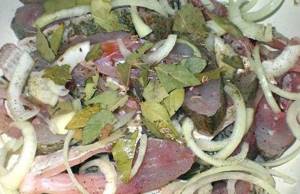
You can cook ide in the oven whole or in large pieces. To do this, in addition to fish, you need to prepare:
- onions – 2 pcs.;
- vegetable oil – 30-50 ml;
- sour cream – 100 g;
- lemon – 1 pc.;
- salt, pepper.
First, transverse cuts are made on the fish, freed from scales and giblets, and rubbed with a mixture of pepper and salt. Then rub the baking sheet with vegetable oil and lay out the onion rings. Half circles of lemon are inserted into the cuts, the carcass is coated with sour cream and placed on an onion bed.
If prepared in pieces, then parts of the lemon are placed inside each piece. The ide is cooked in the oven for 40-60 minutes whole and 30-40 minutes in pieces at a temperature of 180 degrees.
In the same way, you can cook ide in the oven with potatoes. To do this, boil the potatoes until half cooked in salted water, then cut them into 1 cm circles and cover them with whole fish or large pieces. In this case, replace the sour cream with mayonnaise and grease the potatoes with it.
Another very interesting recipe is baking in a shell from a mixture of coarse and fine salt (2:1), egg whites and a small amount of water.
For 1 kg of fish you will need 1.2 kg of salt, 2 proteins, water can be replaced with lemon juice.
Preparation consists of the following steps:
- The carcass is freed from the entrails, leaving the scales, and stuffed with spices.
- Spread a thick layer of salt mixture onto a dry baking sheet and lay out the fish.
- Add salt again on top so that it completely covers the fish.
- Bake in salt at 200 degrees for 17 minutes for every 500 grams of weight.
We recommend reading: Pink salmon in the oven with pineapples and cheese: holiday recipes
When it is ready, the shell must first be carefully broken with a hammer and then removed. This can be done very effectively in front of guests.
Bream balyk
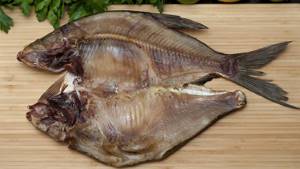
For gourmets, we suggest preparing bream balyk at home. The recipe is also simple, but requires some time.
Ingredients. To prepare we need:
- Fresh bream – 2 fish, about 2 kg each.
- Sugar – regular granulated sugar – 20 grams.
- Coarse table salt – 250 – 300 grams.
- Spices:
- ground black pepper – 30 grams;
- bay leaf – 10 leaves;
- finely ground red hot pepper – 10 grams.
- ¼ lemon.
- Finely crushed ice – 400 grams.
In addition to the products, you will also need nylon rope, gauze and a pickling container with a capacity of up to 10 liters.
Let's cook. The procedure itself will require attention and patience:
- We clean the bream from scales and wash it. Separate the head with gills, tail and fins. Carefully cut along the ridge deep to the spine. Then we cut the rib bones on one side and flatten the fish. We take out the insides no less carefully. We pay special attention to removing the gallbladder: it cannot be damaged in fish. We thoroughly rinse to remove blood and remaining entrails and remove the film.
- We cut through the meat all the way to the skin, but it is advisable not to damage the skin itself. The width of the slices is from 3.5 cm to 4 cm.
- Place the fish prepared in this way on a clean rag. (We do the same with the second copy).
- In a bowl, mix salt, sugar and all the spices. Mix everything well.
- Take a prepared container for pickling and pour the mixture into the bottom in a layer of 1 mm. Sprinkle just a little lemon juice for flavor.
- We put in the first fish. We fill it with a high-quality salt-sugar mixture. Distribute half of the bay leaves evenly, and then apply one layer of finely crushed ice. Squeeze a few drops of lemon juice to give it a harmonious taste.
- We place the second bream on top.
- We repeat the process and press down with a not very heavy - about half a kilogram - oppression.
- We put it in a fairly cold room (you can also put it in the refrigerator if it fits) with a temperature of about 0 degrees.
- After 5 days, remove the fish from the container and wash it in water to remove any remaining mixture.
- Then we put it under running water to soak and keep it like that for 3 – 4 hours. The degree of salinity can be checked by sample.
- As soon as the readiness seems satisfactory, the fish should be removed, blotted dry with a clean cloth, and proceed to the final stage.
- Take 2 pieces of capron rope, 15 cm each. At one end, the fish is grabbed by the tail with a loop, and at the other end, it is tied to the main rope and hung out. The second one is arranged in the same way.
Both balyks are wrapped in gauze to prevent damage by flies.
Fish balyk - cook at home
There are two types of fish balyks: hung (without heat treatment) and cold smoked, which are produced within 3-4 days. To prepare a delicacy, you first need to choose the right fish.
It should be fresh , not frozen, and caught from a clean reservoir, preferably in the autumn. If these conditions are met, the dish will turn out tasty and healthy.
Everyone's favorite delicacy is usually prepared from large fish with a fat content of 5 to 30%. Suitable varieties include:
- sturgeon, weighing from 2 to 5 kg,
- salmon - from 3 to 5 kg,
- carp - from 6 kg,
- asp - 2−3 kg,
- silver carp - 8 kg,
- som - from 4 kg,
- trout - 4−5 kg,
- nelma - 3 kg,
- pike perch - from 2.5 kg,
- pike - 6 kg.
The quality of the dish will depend on what percentage of fat the fish contains. Balyk will turn out to be especially aromatic and juicy from silver carp, sturgeon, salmon, asp, carp, halibut, and catfish. These breeds have a lot of fatty layers , which makes the taste of the delicacy simply wonderful. Pike perch, perch, and pike are low-fat varieties, so it is best to cook them in a dried way.
The process of preparing a delicacy
Balyk from fish at home is not difficult to make, you just need to follow a certain technology, which includes: cutting the carcass, salting, cold smoking or drying and proper storage.
Ingredients used: fish, weighing from 3 kg, with a high percentage of fat content, sugar (per 1 kilogram of meat - 30 grams), salt (per 1 kilogram - 150 grams), spices, seasonings - to your taste.
Cooking:
- Before making balyk, you need to thoroughly clean the fish from scales. Then it must be gutted and washed well. After this, make an incision along the spine, completely separate the loin from the bones and divide the carcass so that you get 2 pieces of meat.
- Now you need to cut the fish into portions. To do this, take 1 piece of fillet and cut it lengthwise into several pieces. Then take one of the meat strips and, with a sharpened knife, cut off small pieces of fish, about 2 cm thick. Thus, cut all the meat. Keep in mind that the cut pieces must be without skin.
- Start salting the fish fillets. Place the chopped meat in a saucepan, add salt, sugar and stir. Then take the appropriate seasonings, treat the pieces of food with them, then roll them into rolls and place them in the same container. The best combinations with fish are the spices intended for it, as well as ground black pepper and suneli hops, which will give the future balyk a pleasant taste and appetizing aroma.
- Place the pan with semi-finished products in the refrigerator for 3-4 days so that the meat is well saturated with salt and spices. During this time, you can stir the fish pieces once a day. If the carcass is large and there is a lot of meat, then salting will last longer, for example, about 1 week.
- After this time, the container with meat must be placed in the freezer for 2 days so that possible microbes and parasites are killed by the cold. If you want, you can first freeze the fish fillets for a few days, and then start salting.
- The last step in preparing balyk is drying (drying) the fish. To do this, remove the pan from the freezer and string the pieces onto a strong thread, leaving small spaces between them. First, it is better to hang the meat for 3-4 hours in the bright sun so that each part of it is covered with a light crust. Then it should be dried in a warm and dry room, without the presence of insects. The drying process usually lasts from 3 to 7 days.
The finished balyk has a pink-yellow color and an appetizing smell of a fish delicacy. It can be used to make sandwiches, added to salads and consumed as a snack with alcoholic drinks. The treat should be stored in the refrigerator, wrapped in cling paper, for no longer than one week.
Useful properties of homemade delicacies
Since culinary processing does not involve boiling or frying the fish, it retains many useful substances, so this delicacy is very healthy.
100 grams of homemade balyk contains the following vitamins : A - 0.057 mg, E - 2.5 mg, B 2-0.2 mg, PP - 1.8 mg, B 1-0.05 mg.
The product also contains minerals necessary for human health:
- magnesium - 23 mg,
- calcium - 40 mg,
- sodium - 3475 mg,
- phosphorus - 180 mg,
- sulfur - 205 mg,
- chlorine - 164 mg,
- iron - 0.8 mg,
- zinc - 0.6 mg,
- fluoride - 432 mg,
- chromium - 56 mg,
- nickel - 7 mg.
Fish meat also contains saturated fatty acids, which have a beneficial effect on the appearance of skin and hair, a small amount of cholesterol, water and ash. Therefore, by consuming a home-made delicacy, you can not only enjoy its rich taste, but also provide your body with vitamins and minerals .
Balyk from ide, simple recipe
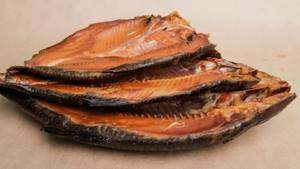
Balyk from asp turns out to be as rich as balyk from ide. The recipe for “Yazevsky” balyk differs little from “Zherekhovsky”.
The described cooking method is the most economical and fastest.
Ingredients. In this case, there will be even fewer components than in asp balyk:
- 1 fish – 1.5 – 1.8 kg.
- Coarse table salt - 200 grams.
- Sugar – 15 grams (optional).
- ¼ lemon (also for everyone).
What kind of fish goes for balyk
Any large fish whose meat has high and medium fat content is considered suitable for preparing balyk. Fatty fish with a small number of small fork bones is prized, but balyk can be made from almost any fish of sufficiently large size.
The most popular types of fish from which delicious balyk is made are asp, silver carp, catfish and carp. Balyk made from sturgeon and red fish from the salmon family will be very tasty. The fattest fish will be any fish caught in the autumn and early winter.
List of fish that make delicious balyk, grouped by popularity:
- Asp, ide, chub, bream;
- Silver carp;
- Catfish;
- Carp, carp, crucian carp;
- Mackerel, mackerel, tuna;
- Pike, zander;
- Chum salmon, pink salmon, trout, omul, whitefish, nelma, salmon;
- Sturgeon and sturgeon species of fish.
There is a fish on this list that cannot be considered a boneless fish and is not a fatty fish, but this does not mean that it cannot be used to make balyk. There will always be lovers of dietary lean meat, for example, pike or pike perch in the form of balyk.
The asp is at the top of this list not because it makes the most delicious balyk, but because it more often ends up in the hands of the fisherman as a trophy. This is a rather bony fish, and when the question arises of how to cook it, two options come to mind: mince it and fry the cutlets, or make balyk and then deal with the bones - it is much more convenient to do this in dried fish than in cooked in a different way.
The fish from which balyk is prepared can be divided by size into medium, large and very large. Medium-sized fish is used for balyk almost entirely, and large ones undergo preliminary cutting - it is divided into tesha and the balyk itself. Very large fish is cut into pieces.
Balyk recipes
Regardless of what kind of fish is used, you can always cook balyk according to a universal recipe. This is not a classic recipe, but adapted for quick preparation of balyk. The secret of delicious balyk lies in following the principles we talked about above.
Simple recipe
We will use a recipe in which the fish is salted in brine. This is the simplest option that allows you to achieve the right taste of balyk, even if you have never cooked it. This way you can bait almost any fish. So let's get started...
What you will need:
- Fatty or medium-fat fish of medium or large size;
- Salt and sugar;
- Spices and seasonings for fish.
For one kilogram of fish you will need: salt - 150 grams, sugar - 30-50 grams. As spices, you can always use allspice and coarse black pepper, bay leaf, coriander, cloves (with caution).
Main stages:
1. Cutting fish; 2. Salting fish in brine; 3. Drying salted fish.
Preparation:
- Clean the fish from scales and remove the entrails;
- Cut off the excess - head, tail, fins;
- Cut the fish into halves along the spine;
- Remove the ridge and cut the fish into pieces 1.5-3 cm thick;
- Sprinkle the pieces of fish with a mixture of sugar and salt, add spices, mix;
- Cover the salted fish with a lid on which to place a small load;
- Place the container with fish in the refrigerator for 4-7 days for salting;
- Remove the fish from the refrigerator, rinse with cold water;
- Pour clean cold water over the fish and let it free itself from excess salt for 2-5 hours;
- Drain the water, let the remaining water drain and hang the fish to dry in a cool, dry, ventilated place, protected from the sun and insects.
After just a couple of days, the fish needs to be checked for the degree of dryness. Thin pieces of fish will be ready earlier, while larger pieces will take longer to dry.
When the degree of drying suits you, you can consider that the fish balyk is completely ready. It can be served at the table, or sent to the refrigerator for storage.
We talked in detail about how to properly store cooked fish in an article devoted to how to properly salt and dry fish.
Classic recipe
Classic balyk is made from sturgeon or fish from the salmon family. The fish is cut into balyk and tesha. If this is freshly caught fish, it will have to undergo a long salting stage for one and a half months - this is required by established standards. Thawed fish is salted much faster. See more details in the video:
Silver carp balyk
Silver carp grows to impressive sizes; it can be classified as a very large fish, which requires cutting the carcass into pieces. Silver carp balyk can be made as shown in the video below:
Balyk from carp
Like silver carp, carp grows to impressive sizes, and if you have a very large carp in your hands, you will have to cut it up in a special way.
In general, the technology for preparing balyk from carp is similar to those described above. For a diagram of cutting carp and a recipe for salting, see the following video:
Cooking balyk
There are a huge variety of ways to prepare balyk, and there is always the possibility of improvisation, but there are common principles and approach that should always be followed.
Fish balyk is divided by type of fish, size, salting method, type and degree of drying of fish meat. Cold smoked balyk (drying fish in cooled smoke) turns out to be very tasty, but it cannot be prepared at home.
In general, preparing fish balyk is done as follows:
- The fish is scaled and cut;
- Prepared fish is salted dry or in brine;
- Salted fish undergoes soaking, which removes excess salt;
- The fish is hung out for drying or sent for cold smoking.
It should be noted that fish salted by dry salting does not always undergo soaking if the exact time and amount of salt are maintained.
Balyk recipe
Regardless of what kind of fish is used, you can always cook balyk according to a universal recipe. The secret to preparing delicious balyk lies in following the principles we discussed above.
Universal recipe for fish balyk:
We will use a recipe in which the fish is salted in brine. This is the simplest option that allows you to accurately achieve the correct taste of balyk, even if you have never cooked it. So let's get started...
- Fatty or medium-fat fish of medium or large size;
- Salt and sugar;
- Spices and seasonings for fish.
For one kilogram of fish you will need: salt - 150 grams, sugar - 30-50 grams. As spices, you can always use allspice and coarse black pepper, bay leaf, coriander, cloves (with caution).
- Clean the fish from scales and remove the entrails;
- Cut off the excess - head, tail, fins;
- Cut the fish into halves along the spine;
- Remove the ridge and cut the fish into pieces 1.5-3 cm thick;
- Sprinkle the pieces of fish with a mixture of sugar and salt, add spices, mix;
- Cover the salted fish with a lid on which to place a small load;
- Place the container with fish in the refrigerator for 4-7 days for salting;
- Remove the fish from the refrigerator, rinse with cold water;
- Pour clean cold water over the fish and let it free itself from excess salt for 2-5 hours;
- Drain the water, let the remaining water drain and hang the fish to dry in a cool, dry, ventilated place, protected from the sun and insects.
